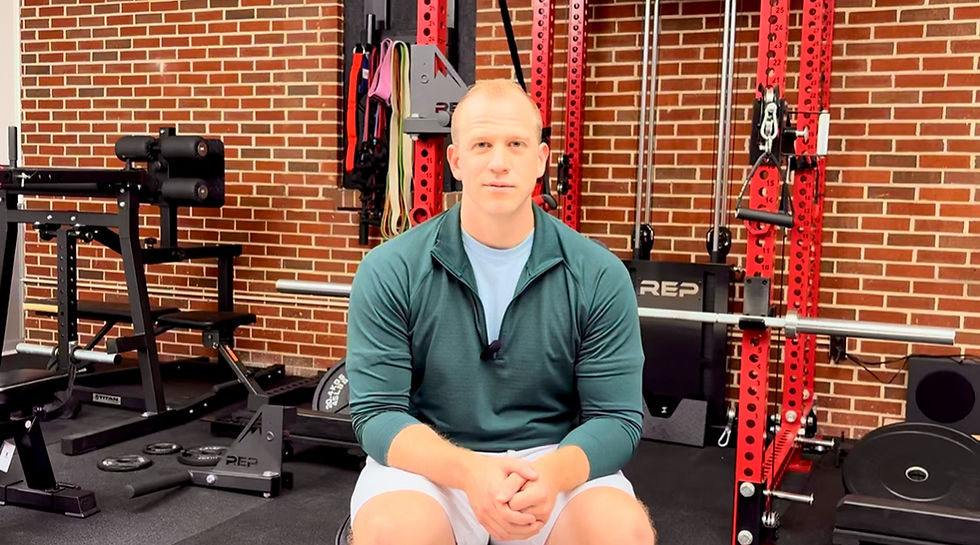Why the Perfect Program Doesn't Exist (And What to do Instead)
- sylvesterfitness

- Sep 2
- 3 min read
Updated: Sep 9

Why the Perfect Program Doesn’t Exist (And What to Do Instead)
When I first started as a personal trainer, I worked in the big-box gyms — LA Fitness, Gold’s, Lifetime. Like most new trainers, I was ambitious and eager to prove myself. Sometimes that ambition bled into other trainers’ clients.
I had people wanting to leave their current trainer to work with me. At first, I thought it was because I had some new “secret” program or cutting-edge method. But in reality, many clients were just chasing something different. They weren’t necessarily looking for progress — they were looking for new.
I call this the “make it sound bad so it sounds good” tactic: a new program looks attractive because it makes the old one sound boring or ineffective. But the truth is, there’s no one-size-fits-all program. Even the “perfect” plan won’t always work, because your needs, goals, and circumstances will change.
Over the years, I’ve tried countless programs — some designed by me, some designed by others. Each time, I’d ride the wave of results as long as possible, only to eventually realize that what worked yesterday may not work today. Progress comes not from finding the perfect program, but from knowing when to stay the course and when to make the right adjustments.
The Illusion of the Perfect Program
There’s a belief out there that some programs are “right” and others are “wrong.” In reality, almost every training style has a time and place — it’s all about context and intention.
People often jump between different modalities because nothing seems to “fit.” And they’re probably right — most cookie-cutter programs aren’t designed for them. Social media only makes this worse by constantly pushing the “next best workout plan.” Unless it’s tailored to your needs and goals, it’s not the best program for you.
What Matters More Than the Program
There’s a saying in fitness: consistency is king. And it’s true. A mediocre program done consistently will always beat the perfect program done inconsistently.
Before worrying about optimizing your plan, ask yourself if you’re showing up with 100% consistency. Then layer in the fundamentals that make any program work:
Progressive Overload: Your body adapts to stress, so you need to gradually increase the challenge. That could mean slowing down reps, adding weight, increasing volume, or changing tempo.
Recovery & Mobility: Progress only happens if you recover from the work. Mobility and fatigue management should be part of the foundation. Doing enough, but not too much, is what keeps you improving without injury.
Lifestyle Logistics: Training has to fit your life. If you’ve just had a baby or started a stressful job, you won’t be setting personal records anytime soon. That doesn’t mean you stop training — it means you adjust expectations.
Signs You Shouldn’t Switch Programs
Every program works off a certain level of specificity, and results take time. If you haven’t given your current program at least 4–12 weeks, you probably shouldn’t be switching yet.
Beginners should stick closer to 8–12 weeks.
More experienced lifters may see results faster, but still need at least a few weeks to adapt.
Patience and tracking are key. Progress isn’t always obvious — it may show up first as smoother form, extra reps, or improved movement quality. Just because you feel like it’s not working doesn’t mean it isn’t. Measure before you change.
When It Is Time to Make Adjustments
The first sign is often how your body feels. If your joints ache more than they feel strengthened, or you leave workouts feeling worse than when you started, it may be time to change things up.
Another sign is a clear plateau. If you’ve been consistent and progress has stalled for weeks, you’ll need to rotate your focus or introduce new challenges. Even professional athletes rotate through different goals and programs throughout the year to keep improving.
Takeaway
There’s no “perfect” program. There’s only the program that fits your life, your goals, and your season right now. Stop chasing shiny new plans and start chasing consistency, fundamentals, and the right adjustments at the right time.
Here’s a question to ask yourself today: “What’s one small tweak I could make to my current program to keep moving forward?”
And if you’re not sure where to start, don’t worry — in next week’s post we’ll cover one of the most overlooked pieces of training: mobility. It might be the missing link between where you are now and where you want to be.



Comments